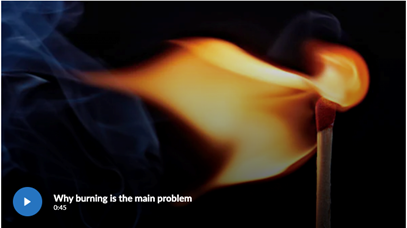For decades, cigarettes have been a boon for numerous retail businesses’ success, while simultaneously being a detriment to public health. Today, however, that market is quickly changing.
There are a growing number of new, smoke-free alternatives to cigarettes on store shelves, and more innovations on the way—like oral nicotine and heated tobacco products—which can help move American adults who smoke away from cigarettes for good. Smoke-free products are a fast-growing part of the marketplace, making them an important component of business success. And, these products are scientifically substantiated better choices for 21+ adults who would otherwise continue to smoke.
Philip Morris International (PMI) has entered the U.S. market, not to sell cigarettes, but to provide a leading portfolio of smoke-free products for America’s approximately 28 million adult smokers—including the more than one million smokers in North Carolina.
The Problem with Burning
The harmful impact of cigarette smoking is widely known, yet the specific reasons for this risk are often misunderstood. The primary danger lies in the process of burning tobacco. When tobacco burns, it produces smoke containing over 6,000 chemicals, around 100 of which are identified by public health agencies as harmful or potentially harmful, directly contributing to smoking-related diseases.
Eliminating the combustion process means no burning and no smoke, significantly reducing users’ exposure to harmful chemicals.
The Truth About Nicotine
Nicotine, a natural stimulant in tobacco, is indeed addictive and not without risk. As noted by the FDA, “[t]his toxic mix of chemicals [in cigarette smoke]—not nicotine—cause the serious health effects among those who use tobacco products, including fatal lung diseases, like chronic obstructive pulmonary disease (COPD) and cancer.”
Yet, the effects of nicotine are often mistakenly confused by consumers and even some health professionals who also incorrectly attribute the harmful impacts of cigarette smoke solely to nicotine. It’s crucial for smokers and the broader community to understand that different nicotine-containing products carry varying risks.
Ultimately, the best choice is to never start or to quit using tobacco and nicotine products. However, for the tens of millions who continue to smoke, it’s vital to understand the role of nicotine and the potential of smoke-free alternatives.
Addressing Misperceptions
Unfortunately, confusing messages from public health authorities and the media are leaving smokers confused about the relative risks of tobacco and nicotine products and businesses uncertain about what products they can legally sell.
Clear, accurate, and non-misleading communication about these products is essential—and adult smokers deserve access to accurate information about smoke-free alternatives. By increasing awareness and providing better options for adults who would otherwise continue to smoke, we can accelerate the journey towards ending cigarette use.
Innovating for the Future
Today, science and technology have made it possible to offer smokers products that may reduce the well-known risks associated with smoking. Importantly, in the U.S., and globally, smoke-free products have a demonstrated track record of leading those who would otherwise continue smoking to fully switch and stop using cigarettes.
The Transformation of PMI
At PMI, we understand the impact of our products and the responsibilities that come with it. This understanding has fueled our global pivot from traditional tobacco products to a future focused on smoke-free alternatives. Our investment in this mission is unmatched in the industry. Since 2008, PMI has invested $12.5 billion in research, product development, scientific substantiation, and commercializing smoke-free products.
As of December 31, 2023, approximately 20.8 million adults around the world had already switched to our leading smoke-free product and stopped smoking. This is a testament to the effectiveness of our smoke-free products, available in 84 markets worldwide. Significantly, nearly 40 percent of our net revenue is now derived from these better alternatives to smoking. Looking ahead, we aim to increase this to more than two-thirds by 2030, further solidifying our role in shaping a smoke-free future.
The journey towards a smoke-free future is complex and requires collaborative efforts across all of society. Open debate and cooperation among public health authorities, and the scientific and business communities are essential. At PMI, we are dedicated to this cause and will continue to work relentlessly to innovate for a smoke-free future, faster.




